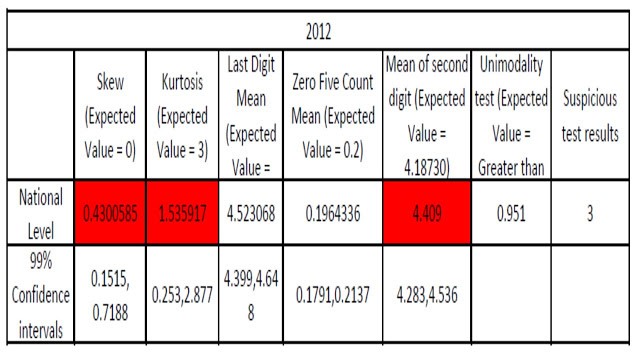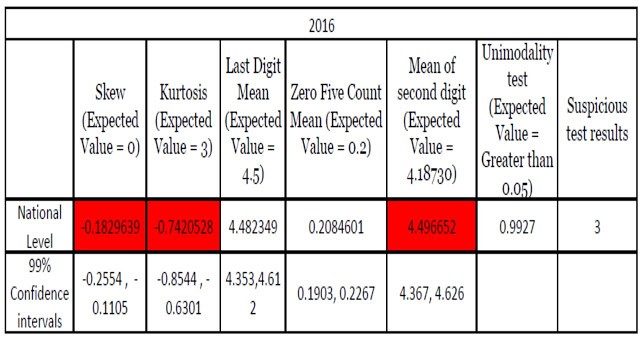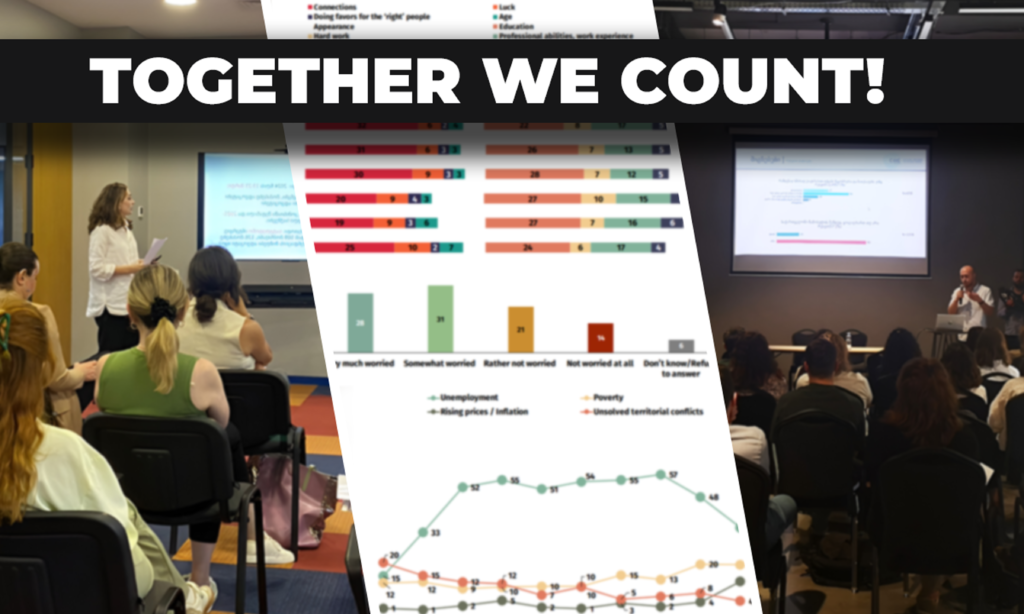In order to help monitor the fidelity of the October 2016 parliamentary election results, CRRC-Georgia has carried out quantitative analysis of election-related statistics within the auspices of the Detecting Election Fraud through Data Analysis (DEFDA) project. Within the project we used methods from the field of election forensics. Election forensics is a field in political science that attempts to identify Election Day issues through looking at statistical patterns in election returns. This blog post reports the results of our analysis.
Our preliminary analysis suggests that the quality of the 2016 proportional list elections when it comes to election day was equivalent to the 2012 proportional list elections.
Before diving further into the results, several notes are needed. First, the data we used is preliminary. Jumpstart Georgia coordinated the double blind entry of election protocols with volunteers. We used their database, which is available here. Second, the results presented in this blog post are based on data downloaded from Jumpstart’s platform on October 11th. Since then, the CEC appears to have added additional amendments to election protocols, which may change results. Third, the analysis presented in this blog post is based on protocols from the 3491 protocols available on the 11th. Fourth, the test results are probabilistic. False positives should be expected 1 in 100 times. Fifth, the test results require substantive knowledge of the situation to interpret.
Below we present the results of the following election forensics tests:
-
- Mean of second digit in turnout;
-
- Skew of turnout;
-
- Kurtosis of turnout;
-
- Means of the final digit in turnout;
-
- Frequency of zeros and fives in the final digit in turnout;
-
- Unimodality test of turnout distribution.
Without getting into too much detail, we use a statistical method known as bootstrapping to generate a range of numbers by which the actually observed value for the above numbers could have fallen by chance (except for the final test, which looks at how many modes the distribution of turnout has). We then check whether the theoretically expected value for each is within the range generated by bootstrapping. In instances when the expected value does not fall within the generated range, it suggests the need for further investigation. The math and theory behind the above indicators is rather complex, and so here, rather than presenting this in more detail, we recommend interested readers take a look at Allen Hicken and Walter Mebane Jr.’s Guide to Election Forensics. Below are the preliminary results of the above tests for the 2012 and 2016 proportional elections.
As the table shows, three test results were suspicious in 2012. The table below shows the results of the tests for the 2016 elections.
As you can see from the above results, in both elections, three tests were set off. Our interpretation of this is that the proportional elections, in terms of election day polling place activities, were roughly equivalent in quality as the 2012 elections. Given that the 2012 elections were considered to be broadly free and fair, our preliminary analysis suggests that the 2016 elections were broadly free and fair as well. It is important to remember that these results are preliminary, and a blog post on our final results is forthcoming.
For more on the subject, take a look at our past blog posts on the subject and keep an eye out for our report on the subject which will come out following the second round of the majoritarian elections.
Note: The DEFDA project is funded by the Embassy of the United States of America in Georgia, however, none of the views expressed in the above blog post represent the views of the US Embassy in Georgia or any related US Government entity.









